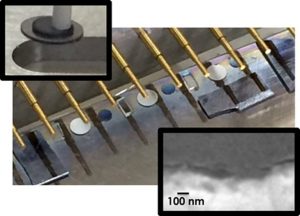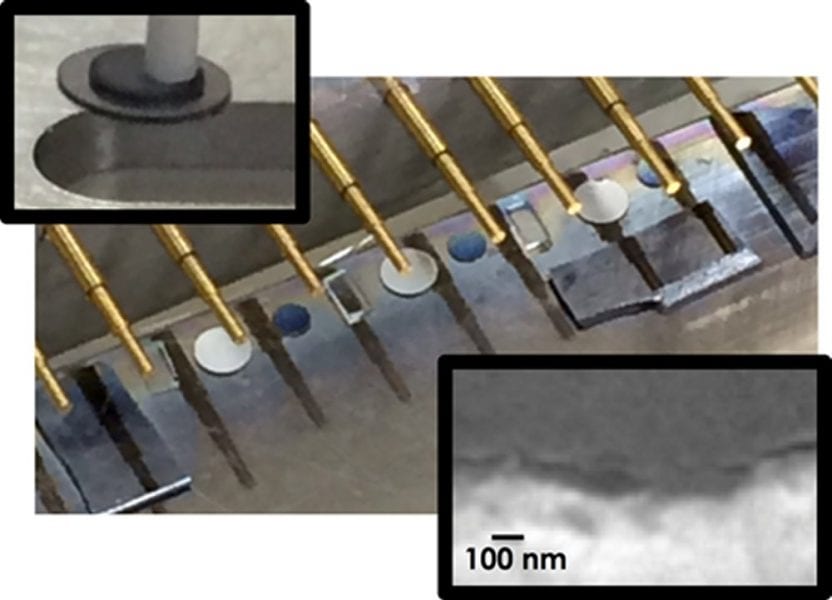Both academic and industrial researchers are exploring microscopic processes that take place on a scale smaller than the thickness of a human hair. Common processes like flowing a fluid through a pipe, or applying a hammer blow to a workpiece are miniaturized to take advantage of a force that is either only important at short distances or can only be applied properly to a small area.
In order to build the tiny devices needed in these “micro” processes, it is often necessary to bond materials together with even thinner glue layers. Because fluid properties like surface tension, viscosity, and flow make it difficult to apply a liquid glue uniformly to a submicron thickness, glue-like surface coatings are an appealing alternative.
Researchers have used the relatively new invention of an iCVD reactor (“initiated chemical vapor deposition”) to grow polymer coatings from vaporized monomers on almost any material. It operates by using a localized heat source to establish a reactive initiator molecule that then migrates to the cool surfaces of the materials that is to be coated. With the presence of monomer molecules and this activated initiator, a polymerization coating can occur on the chosen surfaces.
Generally speaking, different monomers can be chosen to yield specific properties of interest in the polymer coating. For bonding, a monomer with an epoxy ring is chosen so that coated surfaces can be chemically bonded together with extremely thin gaps between them. Past iCVD bonding work showed how to bond clean materials like silicon wafers or channels together. However, most materials that are sectioned to millimeter or smaller scales have non-ideal features like curvature, roughness, and burrs that can interfere with a thin glue gap.
In their paper in Advanced Engineering Materials, Randall et al. develop a simplified iCVD coater that can be installed at low cost in most labs, and can be used to engineer submicron bond gaps in materials with common non-ideal features like curvature, roughness, and burrs. The simplified iCVD coater operates by directly evaporating the coating reactants inside the chamber and using pre-heated localized heat sources to activate the initiator.
Although the reactor is limited to <30 minute coatings, it is well suited to bonding applications with an epoxy-containing monomer. Furthermore, careful bonding engineering is conducted to ensure the coated materials with problem features like curvature, roughness, and burrs are in intimate contact when pressed together to bond. By carefully cross-sectioning the bonded structures, the glue gaps holding the pieces together are found to be submicron and approximately equal to the sum of the bare polymerized coating thicknesses.

















